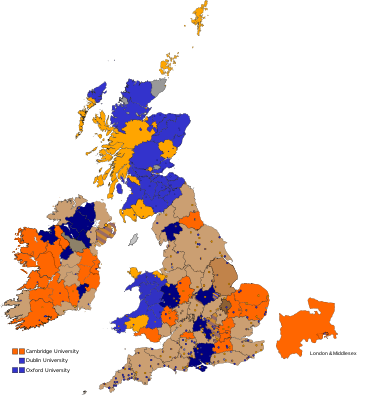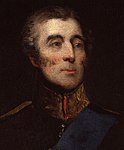
Back যুক্তরাজ্যের সাধারণ নির্বাচন, ১৮৩০ Bengali/Bangla Élections générales britanniques de 1830 French 1830년 영국 총선 Korean
| |||||||||||||||||||||||||||||||||||||||||
All 658 seats in the House of Commons 330 seats needed for a majority | |||||||||||||||||||||||||||||||||||||||||
|---|---|---|---|---|---|---|---|---|---|---|---|---|---|---|---|---|---|---|---|---|---|---|---|---|---|---|---|---|---|---|---|---|---|---|---|---|---|---|---|---|---|
| |||||||||||||||||||||||||||||||||||||||||
 Colours denote the winning party[2] | |||||||||||||||||||||||||||||||||||||||||
 Composition of the House of Commons after the election | |||||||||||||||||||||||||||||||||||||||||
| |||||||||||||||||||||||||||||||||||||||||
The 1830 United Kingdom general election was held on 29 July 1830 to 1 September 1830 to elect members of the House of Commons, the lower house of Parliament. Triggered by the death of King George IV, it produced the first parliament of the reign of his successor, King William IV. Fought in the aftermath of the Swing Riots, it saw electoral reform become a major election issue. Polling took place in July and August[3] and the Tories won a plurality over the Whigs, but division among Tory MPs allowed Earl Grey to form an effective government and take the question of electoral reform to the country the following year.
The eighth United Kingdom Parliament was dissolved on 24 July 1830. The new Parliament was summoned to meet on 14 September 1830, for a maximum seven-year term from that date. The maximum term could be and normally was curtailed, by the monarch dissolving the Parliament, before its term expired. This election was the first since 1708 to cause the collapse of the government.[4]
- ^ Lansdowne was the acting leader of the Whigs.
- ^ Hatched constituencies each returned equal numbers of Whigs and Tories.
- ^ The 1830 General Election
- ^ B. Hilton,[year missing] A Mad, Bad and Dangerous People?[publisher missing]


